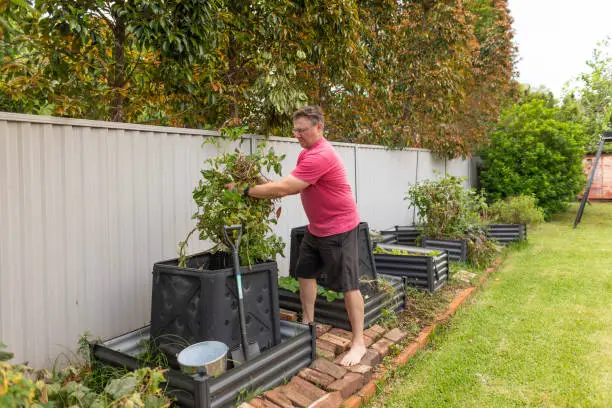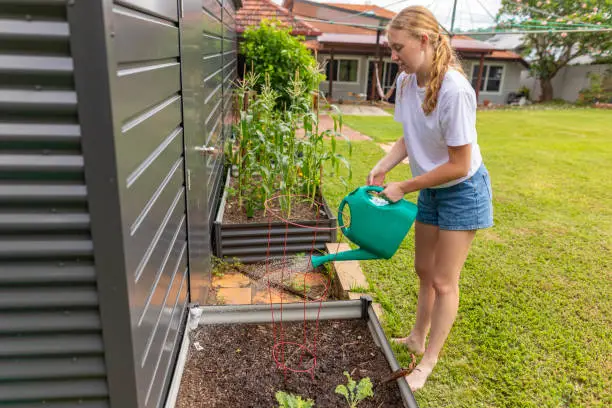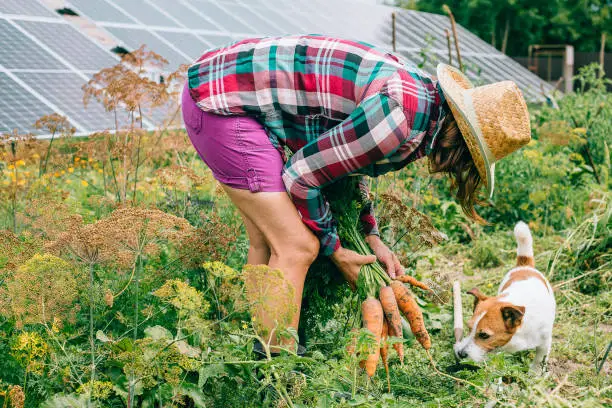Time, Work, and Dedication in Embracing Homesteading
A backyard homesteading is a significant step toward self-sufficiency, nature, and sustainable living. This shift goes beyond growing vegetables and chickens. It’s a lifestyle change that requires time, effort, and dedication to learning and growing with your homestead.

Visions of beautiful gardens, fresh eggs every morning, and a cupboard full of handmade preserves typically draw backyard homesteaders. However, reaching this self-sufficient ambition requires hard effort, challenges, and nature’s seasons. The first step is understanding the dedication needed to turn your backyard into a thriving homestead.
Measure time investment first. Small-scale homesteading takes regular attention. Plants and animals need constant care to flourish regardless of your schedule. Regular feeding, watering, weeding, and pest/disease monitoring are required. Each season has its tasks, from spring soil preparation and seed planting to fall harvesting and preservation. Winter preparation and care are needed for your garden and cattle.
Beyond every day and seasonal activities, learning and implementing new abilities takes effort. Farming requires knowledge and skill, from crop rotation to composting to poultry care. Gardening and animal husbandry beginners may need help with this learning curve. Computers, libraries, and community groups are helpful but require time to understand and implement.
Backyard homesteading is physically demanding. Working the soil, planting, weeding, harvesting, and erecting animal cages are laborious. They require physical strength, stamina, and a willingness to get messy and sweaty. Physical work in homesteading connects you to the land and the life it supports, making it both challenging and rewarding.
Additional commitment comes from financial investment. Even a modest homestead takes finance. Seeds, plants, soil amendments, tools, and animal infrastructure cost money. DIY projects and clever recycling can reduce certain costs, but budgeting and financial preparation are still necessary. Producing your food can pay off these expenditures over time, but the initial investment takes careful planning.
Homesteading also requires emotional and psychological dedication. Your first garden harvest or chicken egg collection will be an accomplishment. Crop failures, livestock sickness, and the usual losses of dealing with nature will occur. These ups and downs require perseverance and a mindset that sees setbacks as learning and growth opportunities.
Backyard homesteading’s environmental impact matters. Growing food locally, composting, and limiting dependency on commercial food systems can minimize one’s carbon footprint by homesteading. This environmental dedication gives homesteaders personal gratification and contributes to a more significant sustainability movement.
Homesteading typically involves unexpected but gratifying community involvement and information exchange. Homesteading naturally builds relationships, whether you’re swapping seeds with a neighbor, gardening together, or sharing your harvest with friends. These interactions offer support, inspiration, and community among like-minded people.
It’s a big decision to start backyard homesteading because you want to connect with your food and the world. It involves learning, growth, resilience, gardening, and animal care. Homesteading has many benefits, from fresh, homegrown food to living in one with nature. As we learn more about homesteading, we realize its value is in the better understanding and appreciation we gain for life and nature.
Homesteading’s Heart and Harvest: Self-Sufficiency and Joy
Backyard homesteading is like opening a book with growth, resilience, and fulfillment lessons. This journey is about self-sufficiency that feeds the body and soul, not just food production. The appeal of turning a plot of land into a lush garden or raising animals that become pals and homesteaders goes beyond the results. What matters is the emotional and physical advantages of deepening your connection to nature and producing something yours.
Living the homestead life entails taking on a role our forefathers knew but that many have forgotten. Reconnecting with the soil, recognizing life cycles, and enjoying self-sufficiency are key. This path has hardships, but the emotional rewards are great. Watching seeds grow or harvesting vegetables you’ve raised gives you a unique sense of accomplishment. A supper produced from your produce is unmatched in pride. The labor, planning, and care put into the property is evident.
Backyard homesteading brings emotional healing and peace beyond self-sufficiency. Weeding, watering, and caring for animals create a meditative area where one can connect with nature. This link promotes attention and presentness, often forgotten in modern life. The garden becomes a haven, and the animals teach patience, responsibility, and stoic acceptance of life’s changes.
The physical demands of homesteading are apparent. But these demands have hidden rewards. Turning compost, maintaining plants, and repairing fences promote strength and endurance, rooting us in our body and the physical world more than desk employment and urban life. This physical activity promotes health, fitness, and stress relief, combating the sedentary lifestyle of many. Homesteaders must also be resilient in caring for the land and animals, which may reveal hidden strengths.
Self-sufficiency brings surprising self and world discoveries. Homesteaders develop thrift, resourcefulness, and ingenuity by repurposing items, solving issues quickly, and making do. These homestead-born abilities teach life lessons that boost resilience and resourcefulness in all domains.
First achievements, shared meals, and the spirit of exchange and support among homesteaders make homesteading emotional. However, being so connected to nature means unavoidable losses and failures. Despite their difficulty, these moments teach acceptance, humility, and the confidence to start over. They remind us that failure is part of growth and learning, not the opposite of success.
Backyard homesteading changes our relationship with food. Eating becomes a celebration of life’s cycles. Beyond food, meals become stories of difficulty, learning, and triumph. With this new relationship with food, we grow in gratitude for the labor and love that goes into producing food and our connection to the web of life.
Homesteading means living intentionally. It means dedicating time, effort, and heart to living a sustainable, resilient, and community-oriented existence. Contrary to consumer society, this lifestyle emphasizes experiences, learning, and personal fulfillment.
As they learn self-sufficiency, homesteaders help promote environmental sustainability. They demonstrate ecological stewardship by growing organic, reducing waste, and living simply. Though small and personal, this contribution radiates hope and action for global environmental issues.
Backyard homesteading requires ongoing learning and adaptability. It requires courage to try new things and grow not just in the garden but personally. Its advantages are as varied as those of the homesteaders who take it, including garden and animal production and intangible growth.






Leave a Reply